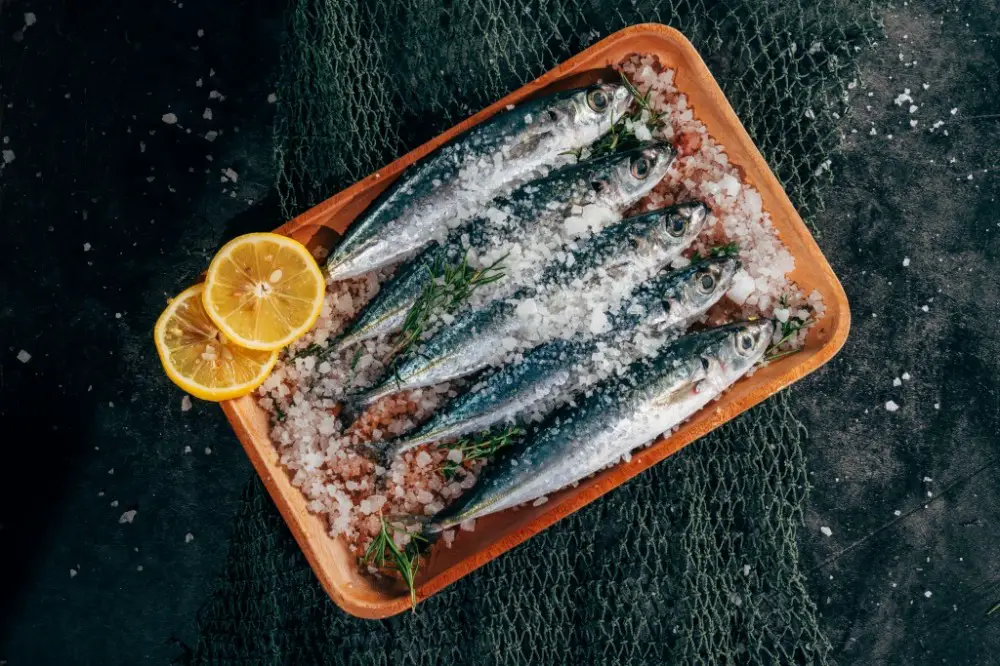Salt gets a bad rap, but sodium is an absolutely essential mineral in the body. The electrolyte is crucial for maintaining fluid balance, transporting nerve impulses, and supporting proper muscle contractions. But although the body needs enough mineral to carry out these functions, consuming too much sodium in your diet can harm your health.
One thing you should be clear about is that salt and sodium are not the same. Table salt is made from sodium chloride, not just sodium. A teaspoon of salt contains approximately 2.3 grams of sodium.
Symptoms that you are taking too much salt
You are thirsty all the time
It’s not exactly newsflash that eating salty foods makes us thirsty. But why does this happen? Well, when the concentration of the blood starts to rise (thanks to an increase in sodium, for example), the brain and kidneys start working to restore balance.
Antidiuretic hormone , for example, can be activated so that the body retains fluids that help dilute the sodium peak. Nerve signals can also trigger to promote the feeling of thirst.
To prevent dehydration, you may start to feel physical symptoms such as dry mouth and dry skin. That is your body telling you to drink to rehydrate your cells.
You feel bloated
Ever notice that your rings are tighter after a salty meal? The more sodium you consume, the more water you will carry. That’s because water follows salt due to osmosis.
Although it may seem counterintuitive to drink more water when you feel bloated, it can actually counteract the effects of consuming too much salt. Drinking adequate fluids can flush everything, including excess sodium, from your system.
To help fight bloating, drink plenty of water, go for a walk after that meal, or sip some lemon tea.
Homemade food tastes bland to you
The salt shaker is not the main culprit when it comes to high sodium intake. Rather, it is the sodium found in processed and packaged foods (think canned soups, frozen meals, snacks, and deli meats) that makes up the majority of our sodium intake.
Whole grains such as fruits, vegetables, whole grains, and raw nuts and seeds are naturally low in sodium. Exposure to fried, spicy, or overly salty foods can get your taste buds used to a certain level of salt. As a result, home-cooked meals taste bland, which will likely make you turn to takeout again.

Blood pressure is rising
Salt isn’t the only thing that can influence blood pressure – genetics, stress, weight, alcohol intake, and physical activity levels also play a role. But chronic consumption of foods high in sodium can play a role.
Excess sodium intake promotes volume retention, which is a major factor in high blood pressure or hypertension. All that extra fluid can exert force on your blood vessels. Over time, this pressure can obstruct the normal flow of blood and oxygen to the organs, making it even more difficult for the heart and kidneys to pump to restore fluid and electrolyte balance.
Long-term uncontrolled hypertension predisposes people to an increased risk of strokes, heart attacks, heart failure, and chronic kidney disease. Although the association is not so clear, certain data suggest that uncontrolled hypertension may increase the risk of dementia or cognitive decline.
How much salt is too much?
Health experts recommend consuming less than 2,300 milligrams of sodium a day. That’s about the amount in just one teaspoon of table salt. However, even that number can be high.
An “ideal” intake of salt is about 1,500 milligrams of sodium per day, especially for those with high blood pressure. For reference, a mere 1-cup serving of canned soup can have up to 650 milligrams of sodium, nearly half of the recommended intake for the entire day.
How to reduce sodium intake?
Look for stealthy sources of salt
You probably know that French fries tend to be high in sodium, but there are many less obvious sources as well. Be careful with the following if you are trying to reduce your sodium intake:
- Breads, rolls, wraps, bagels
- Canned or jarred tomato sauces
- Breakfast cereals
- Cottage cheese
- Ketchup
- Prepared salad dressings

Check the nutrition labels
It helps to determine what your initial sodium intake is and then begin looking for alternatives or substitutions to reduce your intake as needed. A food is considered ‘low sodium’ if it has less than 140 milligrams of sodium per serving.
Although lifestyle and dietary changes are crucial to controlling blood pressure levels, it is also important to work with a doctor or registered dietitian who can give you professional guidance, especially if you have hypertension.
Swap the salt for spices
While the salt shaker isn’t the enemy, it’s not a bad idea to cut back on its use if you tend to salt your food a lot while cooking at home.
Eliminate the salt by heating with spices and herbs like basil, rosemary, paprika and turmeric and use them in your meals. Adding aromatic elements like garlic, onions, shallots, and leeks will add a ton of flavor without salt.
Cook differently
Lastly, if you’re looking to mimic restaurant-style meals at home without overdoing the added salt and fats, consider investing in a deep fryer, slow cooker, or dehydrator.
These cooking methods do not require the excessive use of salt or oil to produce a delicious meal. That way you can prepare your food without compromising health and taste.
